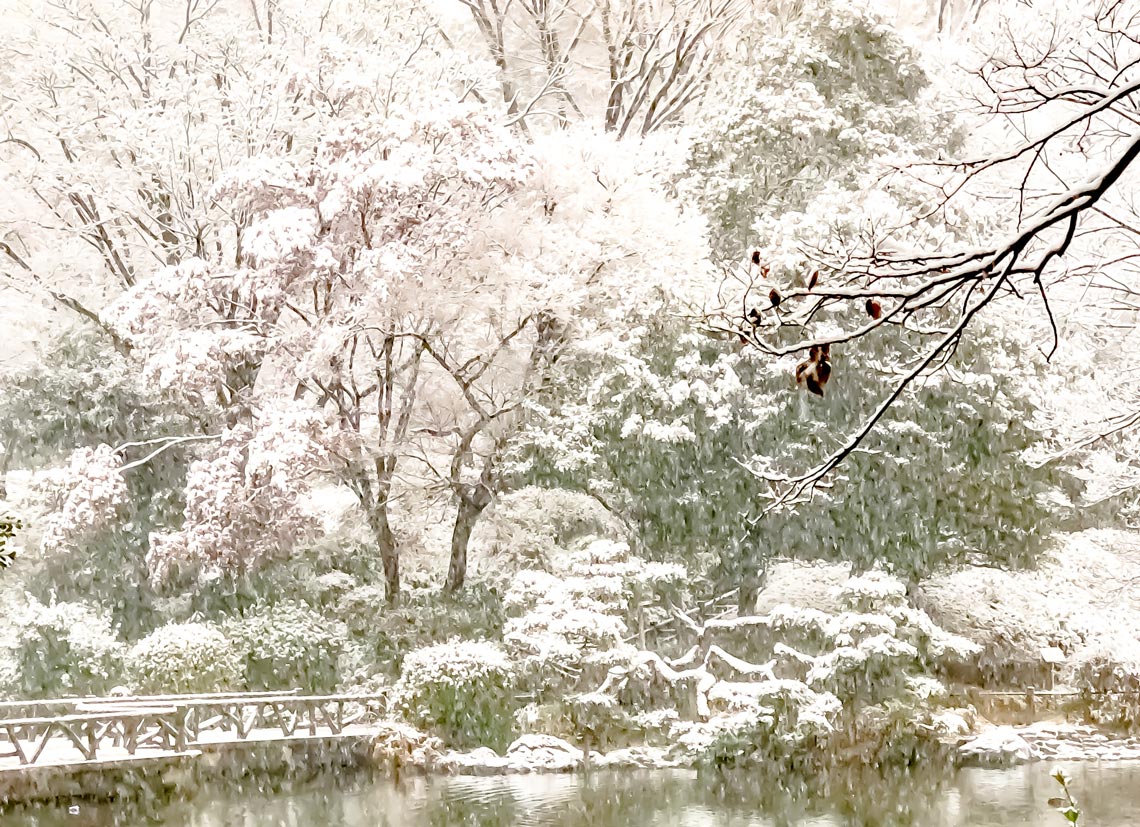The White
Winter snow, an unusually cold week in Tokyo, is a chance to reflect on the nature of creative living.
There is such calm, turning off the bedroom lights then peering through the curtains to the road outside. The small street feels cosy, snuggled under a blanket. Only a single pair of footsteps mark the white.
The snow was predicted, but unlike the last three years it actually arrived, a generous cascade of fat flakes, covering everything in a thicker coat of cold than we have seen in this city for several years.
‘It used to snow more often,’ the locals and old-timers tell me. There’s plenty of evidence for that in art, stories and cold, hard data.
I fall asleep. A few hours later, I awake to a familiar yet alarming sound: the crack and creak of breaking trees. Branches, strained under the weight of fresh snow, are giving way. I wait to hear whether the sounds are isolated or whether another, more devastating sound is still to come, a tree surrendering its footing and crashing to the ground.
That sound has marked different seasons of my life: the giant willow that dominated a back corner of my childhood home; a landmark I used to navigate while riding my first bicycle; the huge eucalyptus, the one defining natural feature of the first home I owned, and part of the reason for buying that house; the teak trees that snapped like giant matchsticks when the monsoon hit in the years I spent in Delhi.
There’s a sadness to a tree being felled by natural causes. So often it feels like a premature end. Like it didn’t have to happen that way. Yes, it’s the way of things, but that doesn’t make it any less cruel.
The next morning I shovel the snow covering the few steps from the road to my front door then spread salt over the exposed path. My antipodean upbringing combined with my nervous nature mean that I am unsure of doing either task well.
But it feels like the right thing to do.
There’s a limit, though, to how far individual efforts can go towards fixing our shared concerns.
The path down the hill near my place, named after some long-forgotten family with the thinnest of connections to minor royalty, is one example. The afternoon sun hasn’t managed to melt all the snow. Walking down to a favourite bakery suddenly becomes a treacherous affair. Along with my fellow pedestrians, I amble along in ever shorter steps, crunch, crunch, slide.
As night falls, the path freezes again, acquiring the look and feel of a bobsled run.
We might say, ‘That’s the government’s responsibility.’ After all, that’s what governments are for, to solve problems we can’t solve on our own. It’s why we allow ourselves to be governed.
Our way now, as with so many things, is to draw hard distinctions, between the personal and the collective, the us and them, the we and they.
Our creative selves cannot thrive amid these kinds of polarisations. We cannot live well without a middle ground. We need the concepts of neighbour and community in our lives; we need to accept their challenges and gifts in order to grow.
Maybe it would be easier if it were just us in peaceful isolation, our clients and customers off at a safe distance, sustaining us with their pay but providing no other form of inconvenience.
But that’s not the way, is it?
Snow feels like the more generous side of nature. We celebrate it in a way we tend not to do with rain, especially in rich, urban places that seldom see snow and almost never run short of water. The white feels like a gift.
But, of course, when the snow turns to slush and ice, when it brings down trees and damages homes, when it closes schools and plays havoc with transport, when it creates sheets of black ice that wipe out cars and pedestrians, it starts to feel less like a gift.
Beauty is always dangerous in some way.





